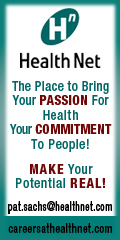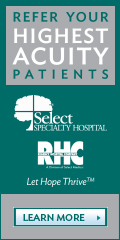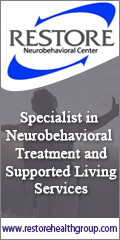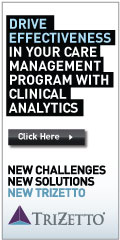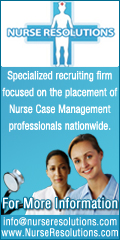Staying Ahead of the Annual Trends
 Print this Article | Send to Colleague Print this Article | Send to Colleague
 By Pat Stricker, RN, MEd By Pat Stricker, RN, MEd
Senior Vice President, Clinical Services
TCS Healthcare Technologies
At this time of year, we see numerous articles and blogs discussing health care trends and predictions for the coming year. The year 2012 is no exception. These trends include a range of topics, but a big issue on most case managers’ minds is how "medical management" and "technology" will work together to improve care management processes. Leveraging technology to support and enhance medical management solutions is essential to optimize clinical and financial outcomes for patients, providers, and payers.
In reality, looking ahead one year at a time often is not enough to make accurate predictions. In fact, software developers need to look even further into the future to identify emerging trends and needs, in order to anticipate and design future innovations. But that isn’t always easy in this industry, because things change so quickly. "Key" predictions for this year may not turn out to be correct or they may be irrelevant in a year or two. There is no "crystal ball" that we can simply rely on with 100 percent certainty.
However, here are a few key observations, okay "predictions" if you will, that are impacting the U.S. health care system in general and case management in particular:
- Promoting Patient –Centered Initiatives. The patient-centered model is "here to stay", at least for the foreseeable future. Accountable care organizations, patient-centered medical home, and guided care programs have shown cost reduction through reduced admissions, increased quality, and high satisfaction rates. These initiatives provide and rely on more direct physician involvement and leadership. This team collaboration means we need to develop better communication channels and transparency of information for all members of the care team.
- Enhancing Patient Engagement Strategies. Since the patient, family members and caregivers are at the heart of the emerging patient-centered model, we also need to improve communications between them and the care team. Easy tools need to be developed that encourage patient education, engagement, and self-management. Millions of patients use the internet to review test results, schedule appoints, get health information, and email their physicians. This trend will continue to grow, so we have to find better ways to continually improve the experience.
- Expanding Communication Channels. The rise in social media interactions to support patient health is another communication trend that is rapidly expanding. It will not affect our elderly population in any great numbers now, since they don’t routinely use social media, but it will become increasingly more engrained in the way we communicate with younger patients and their families. Similarly, text messaging, email, online video chat, VOIP-based telephone systems, and other communication channels will increase our ability to stay connected with family, caregivers, providers and others.
- Empowering Remote and Wireless Monitoring. We are seeing more care coordination being done at provider sites and in home visits through wireless connections using laptops, tablets and smartphones. This is creating increased concerns for the IT departments regarding privacy and security. Remote home monitoring is less expensive to provide now and easier to set up and manage, so it is going to be used more in the coming years. The data from these devices needs to be seamlessly integrated into the medical management software, so care managers can be alerted immediately, if potentially dangerous situations arise.
- Expanding Care Coordination Interventions. We are already aware of other key care coordination processes that are essential, i.e. transition of care, medication reconciliation and management, and patient safety. Tracking and analysis of readmissions is another key area. Medical management systems need to include tools to easily manage, document, and report outcomes for these processes. Systems should currently have these capabilities, but they need to be improved upon, as we learn more about which care interventions drive the most successful outcomes.
- Relying on Efficiency and Real-time Feedback Loops. Efficiency and cost reduction remains a key objective for all programs. Real-time dashboard reporting and data analytics are essential to determine actionable areas for improved quality and cost savings. Business process management is another essential component. Systems need to be easily configured, based on unique business logic, to drive automated, streamlined workflows that improve efficiency, increase productivity, and reduce costs.
- Creating Practical Technologies with Elegant Designs. With Steve Job’s recent passing, we are reminded of the importance of merging technology with elegant designs. Job’s vision for combining iPhones with thousands of health applications that can be easily be downloaded from iTunes or integrating the myriad of EMR/EHR apps that can now run on iPads signal much more of what is to come. Technology that is ready out of the box, practical and functional!
These are just some of the trends that software developers, case managers, and others should keep in mind when developing strategies for future enhancements and implementing care management programs. Therefore, it is important that you provide your thoughts and perspectives to your technology vendors regarding what you feel is needed. This will help us both move forward together to stay ahead of the trends and create innovative IT and medical management enhancements.
Health care is an ever-changing industry, therefore IT applications and clinical processes need to keep pace. By looking forward, we can do a better job with our tasks today and anticipate what is coming tomorrow.    
|
Follow us on:



|

 By Pat Stricker, RN, MEd
By Pat Stricker, RN, MEd